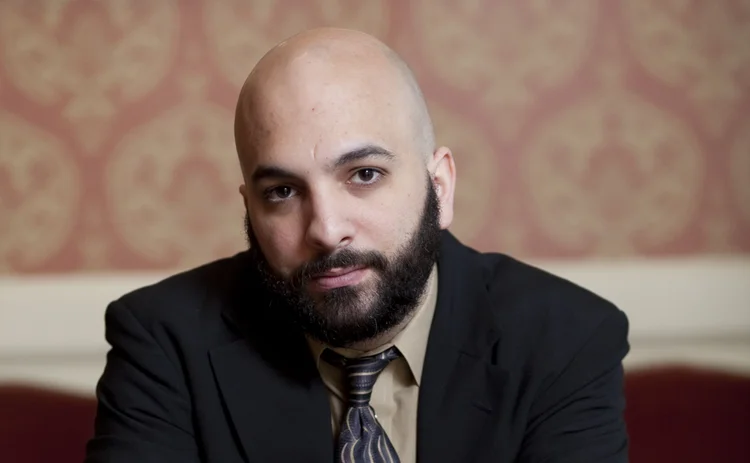Anthony Malakian: Stressed Out

“I’m anti stress tests. I see them used a lot, but the problem for me is that it’s nearly impossible to set them up correctly.” These are the sentiments of Brett Humphreys, executive director of commodities risk management at Morgan Stanley, who spoke at Energy Risk USA earlier this year.
In the highly volatile world of commodities, I found these remarks a bit surprising. There are several reasons why Humphreys avoids traditional stress tests. He says that often, stress tests are designed to account for things that don’t have a direct effect on the portfolio—the results are not “apples-to-apples,” he says. They give feedback on the worst possible scenarios that basically equate to someone “being hit by lightning and a train at the same time. It’s just not really going to ever happen,” Humphreys says.
He wasn’t out to kill stress testing, but says that it’s more useful as a mental exercise than a method of risk management. “The process of thinking about stress scenarios is valuable,” he says. “The problem is that people don’t think about stress scenarios—it’s just something that’s run every week and no one thinks about it.”
At the same event, Gary Taylor, head of market risk for BP’s trading operations, noted that many in the industry are averse to generating stress figures because it simply creates a negative pushback from all directions. “I think a large problem that some people have with stress testing is that they don’t want to put a number out there,” says Taylor, who acknowledges that the traders will almost always say that such a scenario cannot happen, and management gets freaked out.
The topic of stress testing has been in the headlines a good deal as US and European banks have had to prove their stability to regulators and politicians. Those tests, though, can be fudged in the institution’s favor and are different from how a hedge fund runs its internal portfolio analysis.
But what has remained private behind board room doors may be brought into the light of day due to new regulations, specifically around Form PF requirements, which require certain hedge funds to submit results for several different types of stress tests in addition to their value-at-risk (VaR) calculations.
As a result, investors, who have been demanding more transparency, may start asking for those figures. The smaller firms, which have less to lose, will be only too happy to provide those numbers, which will put pressure on other firms to do the same, according to Damian Handzy, CEO of Investor Analytics, a global risk management and analytics firm.
Since the financial crisis first erupted, there’s been a sea change in the number of stress tests that are being conducted and in the level of detail that’s being asked for. Handzy says hedge funds are becoming more focused in what they are investing in, and, as a result, are becoming more focused in how they go about stress testing.
Transparent
This is all for the best as it provides for a more transparent risk management endeavor. But Handzy says the most effective forms of stress testing are computationally intensive, where a firm is looking at what is, in many instances, a seven-dimensional cube of data points that can become unwieldy.
“The amount of data grows very quickly as you do this, but it gives you a landscape of how the portfolio will respond to these various movements,” he says. “That’s the type of stress testing that we’ve seen demand for because it’s more comprehensive and it doesn’t require you to answer unknowable questions,” such as what will happen to oil if country A bombs country B, a scenario mentioned by Humphreys.
There seems to be a dilemma in the industry as to how best to use stress tests. The most comprehensive ways can become data nightmares. The simplest ways are useless and even misleading. But this isn’t an area where a firm should look to go cheap and easy. It is not only better from a risk management perspective to have a robust stress-testing environment, but it is also a way that firms can gain a competitive advantage. That’s a win-win scenario, even if the initial cost can be, well, stressful.
Only users who have a paid subscription or are part of a corporate subscription are able to print or copy content.
To access these options, along with all other subscription benefits, please contact info@waterstechnology.com or view our subscription options here: https://subscriptions.waterstechnology.com/subscribe
You are currently unable to print this content. Please contact info@waterstechnology.com to find out more.
You are currently unable to copy this content. Please contact info@waterstechnology.com to find out more.
Copyright Infopro Digital Limited. All rights reserved.
As outlined in our terms and conditions, https://www.infopro-digital.com/terms-and-conditions/subscriptions/ (point 2.4), printing is limited to a single copy.
If you would like to purchase additional rights please email info@waterstechnology.com
Copyright Infopro Digital Limited. All rights reserved.
You may share this content using our article tools. As outlined in our terms and conditions, https://www.infopro-digital.com/terms-and-conditions/subscriptions/ (clause 2.4), an Authorised User may only make one copy of the materials for their own personal use. You must also comply with the restrictions in clause 2.5.
If you would like to purchase additional rights please email info@waterstechnology.com
More on Trading Tech
The total portfolio approach gains momentum: Building the right tech foundation for success
The rationale for the TPA, and the crucial role technology plays in enabling such an approach
Google, CME say they’ve proved cloud can support HFT—now what?
After demonstrating in September that ultra-low-latency trading can be facilitated in the cloud, the exchange and tech giant are hoping to see barriers to entry come down.
Institutional priorities in multi-asset investing
Private markets, broader exposures and the race for integration
BlackRock and AccessFintech partner, LSEG collabs with OpenAI, Apex launches Pisces service, and more
The Waters Cooler: CJC launches MDC service, Centreon secures Sixth Street investment, UK bond CT update, and more in this week’s news roundup.
TCB Data-Broadhead pairing highlights challenges of market data management
Waters Wrap: The vendors are hoping that blending TCB’s reporting infrastructure with Broadhead’s DLT-backed digital contract and auditing engine will be the cure for data rights management.
Robeco tests credit tool built in Bloomberg’s Python platform
This follows the asset manager’s participation in Bloomberg’s Code Crunch hackathon in Singapore, alongside other firms including LGT Investment Bank and university students.
FCA eyes equities tape, OpenAI and Capco team up, prediction markets gain steam, and more
The Waters Cooler: More tokenization, Ediphy lawsuit updates, Rimes teams up with Databricks, and more in this week’s news roundup.
Buy-side data heads push being on ‘right side’ of GenAI
Data heads at Man Group and Systematica Investments explain how GenAI has transformed the quant research process.








